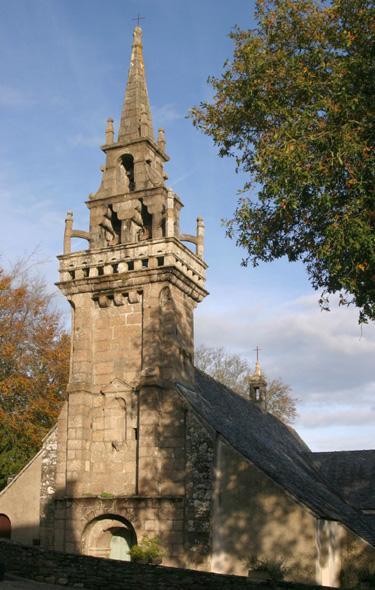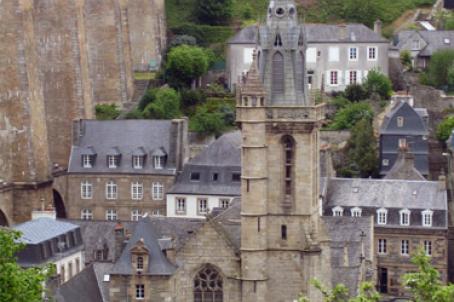Church of Saint-Guénolé
The church stands in the heart of the village of the smallest commune of Finistère (with its 87 ha). The church of Saint-Guénolé rises near the Liberté oak tree, like an old lady who hasn't aged a day. A heritage phoenix, whose rescue is praised by the Locquenolesians.
About this building
Latin cross-shaped building from the late 17th century with preserved arcades and Romanesque capitals from the 11th century. The bell tower has a gallery and two bell chambers, damped by a very short spire bearing the date 1681. The Saint-Guénolé church, built in the shape of a Latin cross, has a nave with three bays, a transept and a choir with a flat chevet. A bell tower built in the 17th century completes the 11th century nave to the west. As indicated by the date 1671 on the lintel of the high chevet window, the building was largely rebuilt in the 17th century.






